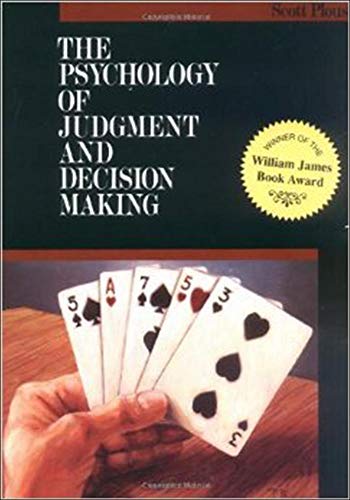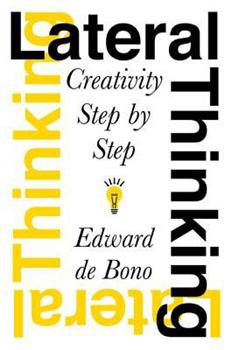These books are all “easy reads” and were selected for maximum gain with minimum expended effort. They are presented in no particular order.

Sources of Power: How People Make Decisions
The author is a research psychologist who developed the understanding of recognition primed decision making. He was instrumental in helping the USMC understand how experts understood a problem and formed an opinion based not only upon what was unfolding but their own personal understanding. This book is his first of several and describes how people make decisions in all kinds of situations. It includes numerous examples and anecdotes to show how people make decisions in everyday examples ranging from nurses and doctors with patients to firefighters in fires or chess masters in “blitz” chess games. The descriptions of the role and value of personal intuition are especially useful, particularly in how intuition is developed and honed. The book remains one of the best and most simple to understand in explaining the basics of human decision making. (See also Streetlights and Shadows)
Gary Klein, Sources of Power: How People Make Decisions, MIT Press, Cambridge, MA, 1999 (293 pages)
Streetlights and Shadows: Searching for the Keys to Adaptive Decision Making
Gary Klein, Streetlights and Shadows: Searching for the Keys to Adaptive
Decision Making, MIT Press, Cambridge, MA, 2009 (304 pages)


Information Anxiety 2
This book is one of the best written, most simple to understand of any available on understanding how humans achieve understanding from an infinite amount of information. The author was trained as an architect and graphic illustrator but is considered to be a pioneer in the practice of making information easily understandable. He is the inventor of the “smart yellow pages” as well as the “maps” of transit services that are now being used all over the world. The book is designed to be read in the conventional “cover to cover” manner or by simply following your own interests. There is an abundance of sidebars and notes that provide illustrations and examples, not to mention tremendously heightening your understanding. Of particular note in this book (and its predecessor—Information Anxiety) is that making information available and understandable is more important than committing huge amounts of esoteric and seldom used facts to memory. This is really a “must read” for anyone charged with responding
to rapidly changing scenarios that are both complex and ill-defined.
Richard Saul Wurman, Information Anxiety 2, QUE Publishing, Indianapolis, Indiana, 2001 (295 pages)
Making Decisions Under Stress: Implications for Individual and Team Training
This book is the seminal work on understanding how people make decisions under stress. It stems directly from the U.S. Navy’s research on the tragedy surrounding the downing of an Iranian air bus which killed 290 civilians. The study was conducted over more than nine years and focused specifically on people in actual conditions so that there was no doubt that they were stressed. Moreover, it involves decisions that involve both individuals and teams. The book is expensive (nearly $50 as of this writing) and seems to have been written by PhDs as a text and to report findings but is still a fairly easy read and well worth the effort to understand it. It is concise and will be valuable as a reference book even if not fully read.
Janis A. Cannon-Bowers and Eduardo Salas, Making Decisions Under Stress: Implications for Individual and Team Training, American Psychological Association Publishing, Washington D.C., 1998 (424 pages)


The Invisible Gorilla: How Our Intuitions Deceive Us
This book focuses on a condition called “inattentional blindness,” a term coined by the authors to describe how our brains can ignore seemingly obvious items, factors and events while concentrating on others. It is not only an easy read but an eye-opener on firmly held beliefs like confident people are also competent, that we have lots of unused brainpower and that we pay more attention than we actually do. It provides simple and easy explanations for things that people rely on to make decisions but that may be far less reliable than some of the less obvious. The theme of the book is that while intuition is certainly valuable we need to be skeptical when it contradicts good evidence.
Christopher Chabris and Daniel Simons, The Invisible Gorilla: How Our Intuitions Deceive Us, Crown Publishing Group, 2010, (242 pages) 1
Processing Under Pressure
This book is tightly focused on making decisions in law enforcement applications and under less than ideal circumstances, particularly stress. It explains many of the complexities involved in high risk situations, as well as how the human nervous system functions. The book is an easy read and is replete with real-life examples that illustrate how factors and influences in play can influence decisions for both good and bad. The author is a professor at California State University, Fresno and his interests are in forensic applications of cognitive theory. The book is especially useful for law enforcement because it not only explains what is going on and why, but provides ways to improve.
Matthew J. Sharps, Processing Under Pressure, Looseleaf Law Publications, Inc., 2010, (224 pages) 1


The Psychology of Judgment and Decision Making
This book is more related to social psychology and the implications of making a decision in conjunction with others. Accordingly, rather than the individual processes as most of the others mentioned previously, it has a strong focus on the social aspects of the decision making process. It is written in a style that the reader need have no great understanding of psychology or cognitive theory. It also presents a number of subtle biases that if not pointed out would be unrecognizable to most of us. The prose pulls the reader into the problems so that the learning is almost experiential. Moreover, it is highly illustrated, to include humorous cartoons, so that many of the concepts can be visualized. The author is a professor of psychology at Wesleyan University. The book is well worth the effort to read and understand it, especially for those in complex assignments which routinely require teamwork.
Scout Plous, The Psychology of Judgment and Decision Making, McGraw-Hill, Inc., 1993, (261 pages)
Lateral Thinking: Creativity Step by Step
This is not a book in decision making, per se, but rather an explanation of how human creativity works. Because of the value of creativity, imagination and ingenuity in resolving complex and high-risk problems in law enforcement, the ideas and concepts presented are not only “mind- stretching” but useful for challenging the status quo and existing paradigms. Like Information Anxiety 2, it is not necessarily intended to be read through cover to cover, but rather absorbed and practiced in small doses with ample time to contemplate the implications. Of particular value are the simple and easy to understand metaphors and comparisons. The author, Edward de Bono, is world renowned for his books and lectures on creativity. He is both an MD and a Ph.D. and was the inventor of “mind mapping,” one of the most useful tools for exploring options since the invention of brainstorming.
Edward de Bono, Lateral Thinking: Creativity Step by Step, Harper & Row, Publishers, New York, New York, 1973, (300 pages)


Thinking for a Change: Putting the TOC Thinking Processes to Use
This is a most useful book for the tools it provides rather than strictly information. While not especially difficult, it is not as easy to understand as most of the other. What sets this book apart is the thinking process application tools. These tools are especially useful for isolating factors and influences for after action reviews of complex and rapidly unfolding situations. It provides step by step guidelines on how to use these tools as well as explaining how they work. It is nearly a “field guide” in dissecting complex situations to identify causes, mistakes, subtle influences, and so forth. The author is a consultant rather than a professor and so the book is focused on the practical aspects.
Lisa J. Scheinkopf, Lateral Thinking: Creativity Step by Step, St. Lucie Press, Boca Raton, Florida, 1999, (300 pages)

©2024 THE DEBRIEF